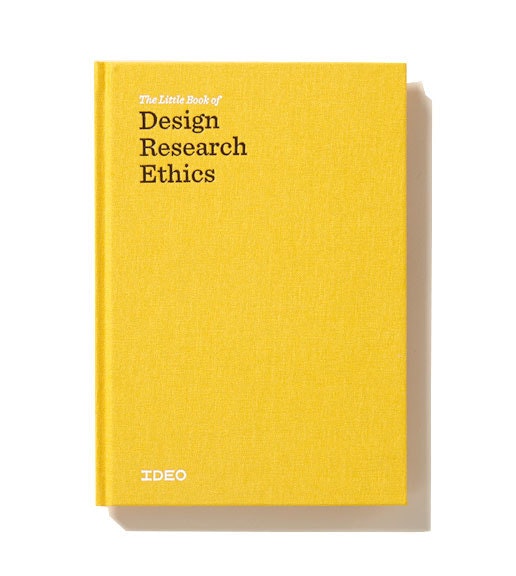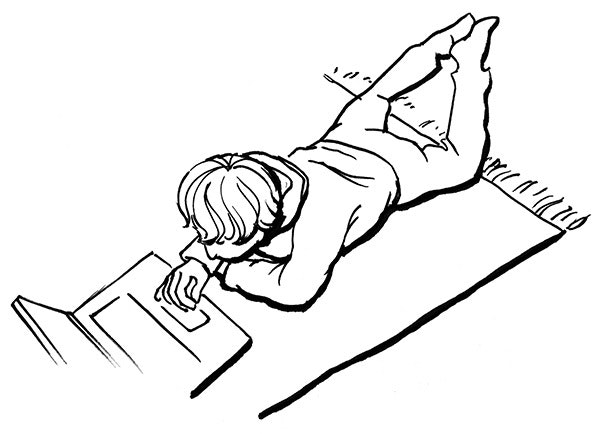8 Exciting Design Research Trends

Understanding the human challenge we're designing for is as much about inspiration as it is about information. Design research now happens in quick loops—gathering insights, building rapid prototypes, and getting feedback—rather than in a long and rigorous discovery phase.
Thankfully, we have smarter tech tools than ever to help us spin through these cycles at a sprint. In a recent Quora Session hosted by IDEO U, we reached out to the entire IDEO community to ask what design research technology and other trends they're excited about. Here’s what we heard:
1. Going rogue
Influenced by Jan Chipchase and The Field Study Handbook, the “pop-up studio” model for doing design research in challenging, less-explored environments is finding success. Chipchase describes a pop-up studio as “a live/work space optimized for teams working toward a shared goal ... highly suited to international research, design, and innovation projects that require speedy immersion.” He talks more about the pop-up studio model in this Co.Design piece (and excerpt from The Field Study Handbook), “How To Do Great Design Research Anywhere On Earth.”
2. Smart sensors
Though some smart sensors are still in the early stages, looking at how sensors (from FitBits to smart moodmetric rings) can help inform our understanding of users' experiences. Projects like MIT's Dermal Abyss look into a future of smart, sensing tattoos.

3. Changes in data + privacy
With the General Data Protection Regulation (GDRP) taking effect in May 2018, design researchers in the EU and beyond will have to address changes to data privacy in a human-centered way, both in how we design our research, and in terms of how we explain it to participants. Understanding what that looks like in practice is important, so we published a little yellow book of Design Research Ethics.
4. Testing concepts in virtual + mixed reality
Augmented Reality (AR) and Virtual Reality (VR) are uniquely experiential and portable, allowing you to visualize complex ideas and measure user engagement in new ways. You can fully immerse users in an experience, get their reaction, and help them co-design (or redesign) an environment or experience on the spot using mixed reality prototypes. And now ARkits allow you to fully transplant a VR experiment with optical calibration—which allows you to retain the spatial boundaries and physics of a VR-created space anywhere on your phone. It’s pretty incredible.

5. Working alongside data science + machine learning
Most of us at IDEO predict that data science will complement and enhance a deeper understanding of qualitative research. By expanding our reach into data science, we’ll be able to understand how our designs are being used during live prototyping and piloting. Rather than relying exclusively on self-reported behaviors and stories, we’ll be able to collect actual interaction data.
But perhaps more interestingly, we’ll also be well-positioned to understand, both qualitatively and quantitatively, how a new artifact is causing a ripple in the ecosystem in which it was placed. As we strive to create disproportionate impact in the world, we’ll now have insight into what’s successful, and what’s impeding success. By introducing new areas of expertise into design research—legal design, policy design, infrastructure design, organizational design, behavioral economics, urban planning, macroeconomics, and more—we can begin to shift some of the fundamental underpinnings that can cause negative and adverse outcomes at individual, group, organizational, and societal levels.
6. Neuroscience x design research
One of our design researchers who studied cognitive neuroscience notes that there is a major connection between the brain and design—and a lot that we still don't know about that connection. This Quartz article discusses how neuroscience can help us create more effective human-centered cities. “Technology has now reached the stage where we can translate decades of neuroscience and psychological research from the lab into the city,” says neuroscientist Dr. Hugo Spiers of University College London. Now when we test prototypes, we can measure behavior, cognition, emotional reactions, physiological markers, and brain activity. Here are a couple more articles on the subject, from Forbes and The Leading Strand.
7. Digital forensics x design research
As technology becomes more ingrained in our daily lives, understanding how we live our digital lives—and the digital trail we leave as we go—will help unlock insights into new behavior.

8. Ethics in the age of artificial intelligence
Artificial Intelligence (AI) changes interaction and design in a way that's dynamic and incredibly complex. Because of its scale, adoption speed, and widespread human impact, it's important that someone raise a hand and ask the question, "Even though we can create this, should we?" Not all AI models are transparent and design researchers will increasingly become the voice in the room questioning its development. This isn't any different than what we do now, but it's more important in the age of AI.
This content originally appeared in a Quora Session hosted by IDEO on November 1, 2017. Special thanks to Ovetta Sampson, Dan Perkel, Michael Chapman, Samantha Miller, Rebecca Wint, Alana Murao, Mike Peng, Geoff Schwarten, Erin Bogar, Saige Perry, and Katie Clark for their contributions!
Words and art
Subscribe

.svg)







